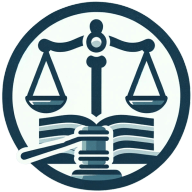How Can Due Diligence Be Conducted in a Merger Or Acquisition?
Due diligence is a critical process in mergers and acquisitions, requiring a strategic approach to uncover potential risks and opportunities. This article delves into the key aspects of conducting effective due diligence, drawing on insights from industry experts. From prioritizing risk areas to leveraging forensic evidence, readers will gain valuable knowledge to navigate the complexities of M&A transactions.
- Prioritize Risk Areas in Due Diligence
- Tailor Communication to Client Understanding
- Customize Checklists with Cross-Functional Expertise
- Leverage Forensic Evidence for Case-Changing Results
Prioritize Risk Areas in Due Diligence
One method we've consistently found successful for conducting due diligence in a merger or acquisition is implementing a highly structured, systematized legal checklist with a risk-prioritized approach from the outset. Instead of a generic, exhaustive review of every single document in a data room, we work closely with the client and other advisors (financial, operational, technical) to identify the most critical risk areas specific to the target company and the nature of the transaction - whether that's regulatory compliance in healthcare, intellectual property in tech, or environmental liabilities in manufacturing. This allows us to prioritize what to address on our due diligence checklist, focus our legal team's review efforts on the areas most likely to contain potential deal-breakers or significant post-closing liabilities, and address the most material issues early in the process, thereby utilizing resources efficiently and providing the client with a clear understanding of the significant risks quickly.
If you don't do this, your due diligence can go on endlessly without a clear direction and fixate on minor issues that may sink the deal.

Tailor Communication to Client Understanding
Clear communication with clients and understanding who your client is are two essential components of the client education process for every case and client. Your client needs to understand the process and make informed decisions. Our job is to meet them where they are and figure out the most effective way to communicate with every client. Achieving this requires flexibility in terms of your communication approach.
Some clients may have a lower level of education and/or understanding of the legal process. Meanwhile, others may have a high level of education, higher-than-average knowledge of the legal process, and/or feel they understand everything about the process (even when they may not). As a result, it is critical to be able to adjust your approach and understand each client's communication style and how they receive information, so that you can effectively communicate with them and better represent them.

Customize Checklists with Cross-Functional Expertise
When conducting due diligence in a merger, I rely heavily on building a detailed, cross-functional checklist tailored to the specific deal's risks and industry. Early in one acquisition, I noticed that generic templates missed critical vendor contract nuances that could impact future liabilities. To avoid this, I collaborated closely with finance and operations teams to identify unique contract clauses and regulatory issues upfront. This approach ensured no surprises emerged after closing, and we were able to negotiate better terms based on those findings. My key advice is to customize due diligence processes beyond standard checklists and engage diverse internal experts early. That way, you get a comprehensive view of potential risks and opportunities, enabling smarter, more confident decision-making. This method has consistently helped me spot red flags before they become costly problems.

Leverage Forensic Evidence for Case-Changing Results
In one high-profile criminal case I was involved in, the decisive factor was a forensic audit of digital communications between the defendant and a third party. The prosecution alleged collusion in a financial fraud scheme, but by presenting meticulously extracted and timestamped email headers, along with verified IP logs, we demonstrated that the defendant had no access to the internal network during the critical time frame.
The forensic evidence was not just supportive — it was pivotal in dismantling the circumstantial narrative. Its authenticity, coupled with expert testimony, led the court to acquit the defendant on all charges. This case reaffirmed that forensic accuracy and expert presentation can reverse assumptions and fundamentally shift outcomes in courtrooms.


